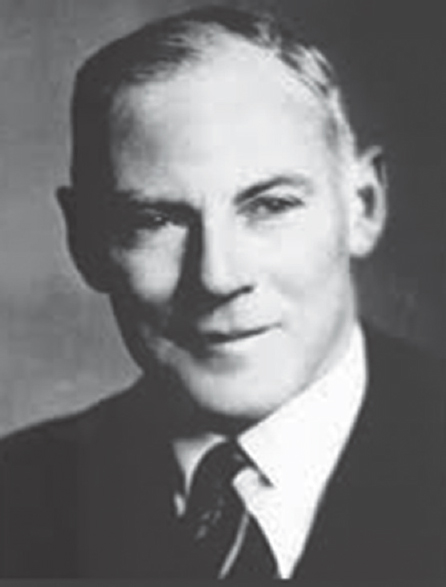Translate this page into:
Sir Hugh Cairns: The Neurosurgeon Who Introduced Crash Helmets
This is an open access article distributed under the terms of the Creative Commons Attribution-NonCommercial-ShareAlike 3.0 License, which allows others to remix, tweak, and build upon the work non-commercially, as long as the author is credited and the new creations are licensed under the identical terms.
This article was originally published by Medknow Publications & Media Pvt Ltd and was migrated to Scientific Scholar after the change of Publisher.
Abstract
Statistics prove that more Indians die in Road traffic related accidents than in wars. Prior to World War II, the death toll across the world used to be very high. It was at this juncture that a Military Neurosurgeon named Hugh Cairns introduced the compulsory wearing of crash helmets and brought about a reduction in mortality by more than 50%. Within a decade of introduction of crash helmets in Britain, the entire world followed suit. The results of his efforts are here for all of us to see. This innovative military neurosurgeon is credited as the one who introduced the concept of mobile neurosurgical units during world war and also the first proponent of usage of penicillin in war. His concepts in war surgery are still followed by militaries across the world. This article comes as a tribute to this great Neurosurgeon who helped in saving millions of lives.
Keywords
Crash Helmets
dispatch riders
mobile neurosurgical unit
Global status report on road safety 2013 given by the Indian National Crime Records Bureau states that over 1, 37,000 people were killed in road accidents in 2013 alone. That is more than the number of people killed in all our wars put together. The Indian statistics is more or less similar to that of the world. Most of the Deaths occurring following Road Traffic accidents occur due to traumatic brain injury.
Before introduction of crash helmets the mortality due to road traffic accidents used to be very high. The credit of reducing the morbidity and mortality due to head injury goes to a British Neurosurgeon of Second World War. Sir Hugh Cairns [Figure 1], consultant British neurosurgeon during World War II, was a leader who helped in establishing neurosurgery as a specialty in Britain. This charismatic and innovative neurosurgeon, a former student of Harvey Cushing,[1] is credited with saving thousands of lives during World War II. He accomplished this by introducing and implementing innovative programs such as helmets for motorcyclists, mobile neurosurgical units near battle zones, and the military usage of penicillin.[2345] There used to be high mortality among the Dispatch Riders during World War II. This was because they were not supposed to use head lights while driving their motorcycles at night. This coupled with the uneven terrain, and mechanical shortcomings of machine led to high morbidity and mortality. As a result of his untiring research on helmets at St. Hugh's and the Radcliffe Infirmary,[6] he introduced helmets for the Dispatch Riders within the armed forces. As a result of this measure, mortality rate for those suffering head injuries dropped by nearly 50%.[7] It was only in 1973, i.e., 32 years after the publication of his findings on benefit of crash helmets that helmets were made compulsory in the United Kingdom. Soon after, this other countries followed suit. In addition, Cairns inspired and taught a generation of neurosurgeons, neurologists, and neurological nurses in the care of the brain and spinal cord injuries at Oxford's Military Hospital for Head Injuries.[8] He was a pioneer in the treatment of infections of the nervous system. He was pivotal in supporting animal research demonstrating the critical role of acceleration in the causation of concussion. Cairns research implicated rotary acceleration and shear strains as particularly damaging in head injuries. The world will forever be in debt to Cairns for introducing crash helmets which have indeed saved millions of lives. At the end of his address to the medical students he once said: “… The greatest personal success is usually incidental to a life spent in service to patients or in research… the direct pursuit of material objectives is usually disappointing.” A word is enough for a wise man.[9]

- Photograph of Sir Hugh Cairns (Courtesy the Cairns Museum)
Financial support and sponsorship
Nil.
Conflicts of interest
There are no conflicts of interest.
REFERENCES
- The History of the Radcliffe Infirmary. Banbury: Image Publications; 1990. p. :106.
- Head injuries in motor-cyclists. The importance of the crash helmet. Br Med J. 1941;2:465-71.
- [Google Scholar]
- Hugh Cairns: First Nuffield Professor of Surgery University of Oxford. Oxford: Oxford University Press; 1991.
- The Cairns Tradition, Journal of Neurology, Neurosurgery, and Psychiatry. . 1990;53:188-93.
- [Google Scholar]
- Lawrence of Arabia, Sir Hugh Cairns, and the origin of motorcycle helmets. Neurosurgery. 2002;50:176-9.
- [Google Scholar]
- The Cairns memorial lecture: The Cairns tradition. J Neurol Neurosurg Psychiatry. 1990;53:188-93.
- [Google Scholar]






